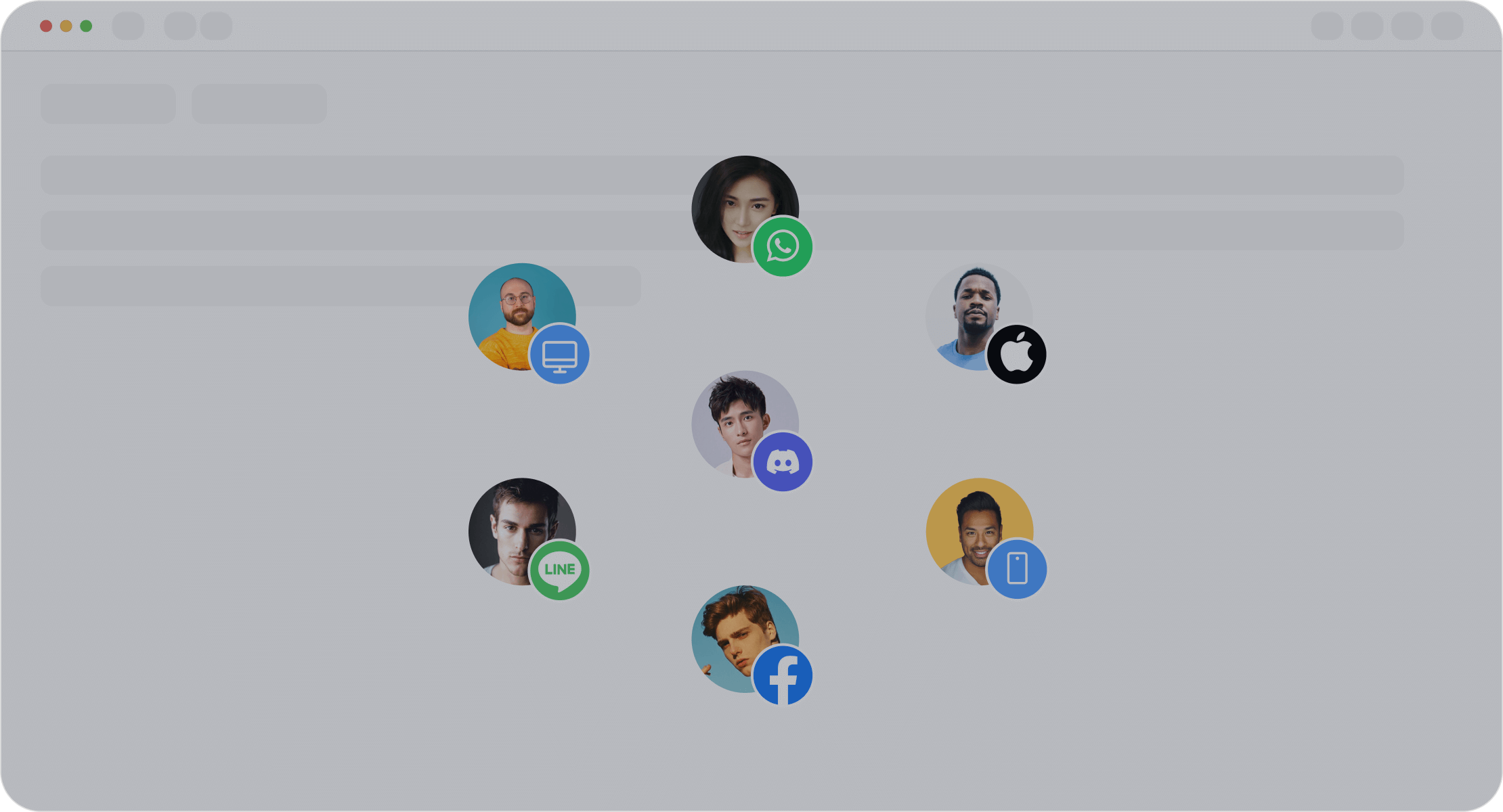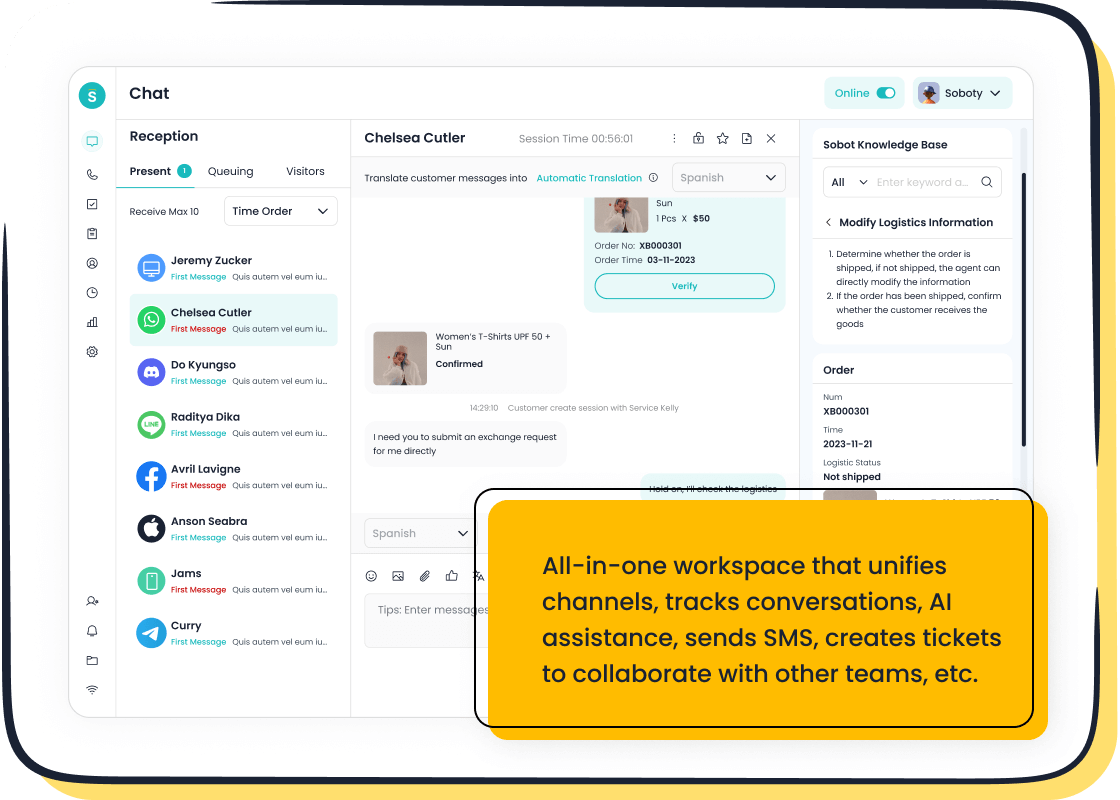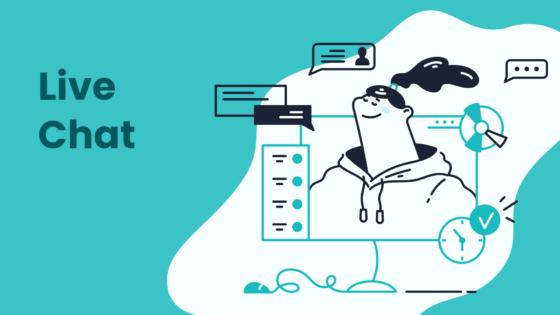Retail Customer Support Solutions Head to Head

Choosing the right retail customer support solution drives ecommerce growth and customer satisfaction. Leading customer service software in 2025 offers omnichannel communication, live chat, and AI-powered automation. Retail customer support now relies on omnichannel strategies, Sobot AI, and Sobot call center features. Ecommerce businesses benefit from live engagement, unified customer data, and seamless omnichannel integration. Sobot delivers a solution with live support and omnichannel capabilities, helping retailers improve customer support and maximize conversion.
Retail Customer Support Overview
What Is Retail Customer Support?
Retail customer support refers to the set of services and tools that help ecommerce and brick-and-mortar businesses assist shoppers before, during, and after a purchase. This support covers everything from answering product questions to resolving issues with orders or returns. In ecommerce, customer support often happens through digital channels like live chat, email, and social media. In physical stores, support usually takes place face-to-face.
Retail customer support plays a key role in customer experience management. It helps businesses build trust, increase loyalty, and drive repeat purchases. For ecommerce brands, customer support must be available across multiple channels to meet shoppers where they are. Brick-and-mortar stores focus on immediate, in-person help and hands-on service. Both types of businesses need to understand why customers choose each channel and deliver the right support to match those expectations.
Customers expect different support experiences depending on the channel:
- In-store shoppers want quick, personal help and the chance to see or try products.
- Ecommerce customers value convenience, fast answers, and the ability to complete purchases online.
- Many shoppers blend both experiences, such as buying online and picking up in-store, or researching online before visiting a store.
- Virtual shopping and clienting give ecommerce customers personalized help similar to in-store service.
Key Trends in 2025
The retail industry continues to evolve as ecommerce and cx become more connected. In 2025, several trends shape retail customer support and customer experience management:
- Omnichannel support is now standard. Retailers unify online and offline data to deliver seamless cx.
- AI and automation power faster, more accurate responses. Chatbots handle common questions, freeing agents for complex issues.
- Ecommerce brands use analytics to personalize support and improve cx at every touchpoint.
- Data security and privacy remain top priorities. Leading customer service software uses tokenization, encryption, and masking to protect customer information and support safe data sharing.
- Blended experiences like buy online, pick up in-store (BOPIS) and virtual clienting continue to grow, requiring flexible support solutions.
Retailers investing in modern customer support solutions see strong returns. A recent study found that businesses upgrading to advanced platforms achieved a 315% ROI over three years, with payback in less than six months. These gains come from improved cx, higher conversion rates, and better customer experience management. Ecommerce companies that prioritize cx and invest in the right tools position themselves for long-term growth.
Comparison Table

Features and Pricing
Retailers in 2025 need customer service software that delivers fast, reliable, and flexible support. The best customer service software combines live chat, omnichannel communication, AI-powered automation, and analytics. These tools help businesses connect with customers on their preferred channels and improve every step of the shopping journey.
The table below compares leading customer support software for retail. It covers key features, pricing, and ideal use cases. Sobot stands out with its advanced omnichannel and AI capabilities, especially in its Live Chat product.
| Software | Key Features | Pricing (Starting) | Best For |
|---|---|---|---|
| Sobot Live Chat | Omnichannel, AI chatbots, unified inbox, live analytics, system integration, customizable widgets, auto-translation, WhatsApp API, ticketing, voice call center | Custom/Quote-based | Retailers needing seamless omnichannel, AI, and live engagement |
| Zendesk | Ticketing, live chat, knowledge base, automation, analytics, integrations | $19/user/month | Large teams with complex workflows |
| Intercom | Live chat, bots, product tours, messaging, help desk software, analytics | $39/user/month | SaaS, startups, and digital-first brands |
| HubSpot Service Hub | Help desk software, live chat, ticketing, knowledge base, automation, CRM | $20/user/month | Businesses using HubSpot CRM |
| Front | Shared inbox, live chat, workflow automation, integrations, analytics | $19/user/month | Teams needing shared communication tools |
Note: Pricing may vary based on features and number of users. For the latest details, visit each provider’s website: Sobot, Zendesk, Intercom, HubSpot, Front.
Common Features in Leading Solutions
Most best customer service software in 2025 offers:
- Streamlined checkout and faster transactions with barcode scanning and mobile payments.
- Centralized control across locations and channels using cloud-based systems.
- Enhanced loyalty and retention through CRM, loyalty programs, and personalized marketing.
- Real-time analytics and customizable reports for sales, inventory, and employee performance.
- Flexibility to sell anywhere with omnichannel, including in-person, online, and mobile POS.
Sobot’s Live Chat product brings these features together in one platform. It supports live engagement on websites, apps, and social media like WhatsApp, Facebook, and Instagram. The unified workspace helps agents manage all conversations and customer data in real time. AI-powered chatbots handle routine questions, while live agents focus on complex issues. Built-in analytics and customizable reports help businesses make smart decisions quickly.
Best Use Cases
Choosing the best customer service software depends on business size, sales channels, and customer needs. Here are the top use cases for each solution:
-
Sobot Live Chat:
Sobot fits retailers who want to unify online and offline support. Its omnichannel and AI features help businesses respond instantly on any channel. Retailers can boost conversion by 38% using precise profiling and tailored live service. Sobot’s solution works well for ecommerce brands, brick-and-mortar stores, and hybrid businesses. It also supports global teams with auto-translation and multi-language chatbots. -
Zendesk:
Zendesk suits large enterprises with complex support needs. It offers robust ticketing and workflow automation. Companies with high ticket volumes and multiple departments benefit from its help desk software. -
Intercom:
Intercom works best for SaaS and digital-first brands. Its live chat and messaging tools help tech companies onboard users and provide fast support. Startups and software businesses often choose Intercom for its product tours and automation. -
HubSpot Service Hub:
HubSpot Service Hub is ideal for businesses already using HubSpot CRM. It connects sales, marketing, and support in one platform. Small to midsize companies use its help desk software and live chat to manage customer relationships. -
Front:
Front helps teams that need a shared inbox and live chat. It is popular with companies that want to centralize email, chat, and SMS in one place. Front’s workflow automation supports fast team collaboration.
Tip: Retailers should look for customer service software that supports omnichannel, live engagement, and AI automation. These features help businesses deliver fast, personal support and increase customer loyalty.
Sobot’s Live Chat stands out for its ability to unify all channels and provide live, AI-powered support. Retailers using Sobot report higher conversion rates, better customer satisfaction, and improved operational efficiency. For example, Sobot’s integration with WhatsApp API allows businesses to reach customers where they spend the most time, supporting both marketing and support in one solution.
The best customer service software in 2025 helps retailers:
- Respond to customers instantly on any channel.
- Centralize customer data for a complete view of each shopper.
- Use AI and automation to handle routine tasks and free up agents.
- Analyze performance with real-time data and reports.
- Personalize support to build loyalty and drive repeat sales.
Retailers who invest in the right customer support software see measurable results. Sobot’s clients, such as OPPO, have achieved an 83% chatbot resolution rate and a 57% increase in repurchase rate. These outcomes show the power of combining live, omnichannel, and AI-driven support in one customer service platform.
Customer Service Software Reviews

Sobot Live Chat
Sobot Live Chat stands out as a comprehensive customer service software for retail and ecommerce. The platform supports live chat support across websites, apps, and social media channels such as WhatsApp, Facebook, and Instagram. Sobot’s unified workspace allows agents to manage all live conversations and customer data in one place. AI-powered chatbots handle routine questions, while agents focus on complex issues. Businesses benefit from omnichannel support, customizable widgets, and auto-translation features. Sobot Live Chat improves conversion rates by 38% through precise profiling and tailored service. Built-in analytics help retailers track over 150 indicators, making data-driven decisions easier. Sobot integrates with major ecommerce platforms and offers a free trial for new users. Learn more at Sobot Live Chat.
Zendesk
Zendesk remains a popular customer service software for large retail teams. The platform provides help desk software with ticketing, live chat, and automation tools. Zendesk’s knowledge base and analytics features help agents resolve issues quickly. Retailers with complex workflows use Zendesk to centralize support and improve customer satisfaction. The software integrates with many third-party apps, supporting omnichannel communication. Zendesk’s pricing starts at $19 per user per month, making it accessible for larger organizations. More details are available at Zendesk.
Intercom
Intercom has earned a strong reputation among digital-first retailers. The customer service software offers live chat, messaging, and automation tools. Intercom’s AI agents can handle up to 50% of support volume automatically, increasing efficiency. Retail users appreciate the quick setup and user-friendly interface, though advanced features require more training. The pricing model is complex, with entry-level plans starting at $29 per seat per month and premium tiers exceeding $139. Many features need paid add-ons, which can raise costs for startups. The table below summarizes Intercom’s strengths and weaknesses:
| Strengths (Pros) | Weaknesses (Cons) |
|---|---|
| Quick setup, intuitive interface | Higher pricing, less accessible for startups |
| Real-time live chat and messaging | Limited premium features on basic plans |
| Automation workflows | Steeper learning curve for advanced tools |
| Actionable analytics | Less flexibility in branding |
| Strong integrations | Constraints in analytics depth |
Visit Intercom for more information.
HubSpot Service Hub
HubSpot Service Hub provides customer service software that connects support, sales, and marketing. The help desk software integrates with ecommerce platforms like Shopify and Magento, giving agents a unified view of customer data. Retailers use automation tools, chatbots, and knowledge bases to reduce repetitive tasks and ticket volumes. The platform streamlines workflows, improves ticket visibility, and helps agents resolve issues faster. HubSpot Service Hub supports scalable operations and enhances customer satisfaction. Key benefits include:
- Integration with major ecommerce platforms for centralized support.
- Unified customer view for personalized service.
- Automation and AI tools for efficient ticket management.
- Streamlined workflows for faster resolutions.
- Improved productivity and reduced churn.
Learn more at HubSpot Service Hub.
Front
Front offers customer service software designed for teams that need shared inboxes and live chat support. The help desk software centralizes email, chat, and SMS, making collaboration easier. Retailers use Front to automate workflows and manage customer conversations in real time. The platform integrates with popular business tools and provides analytics for performance tracking. Pricing starts at $19 per user per month. Front suits teams that value fast communication and streamlined support. More details can be found at Front.
Ecommerce Customer Service Software Features

Omnichannel Support
Omnichannel support has become essential for ecommerce customer service software. Retailers use omnichannel and multi-channel support to connect with shoppers on websites, apps, social media, and messaging platforms. This approach allows businesses to unify customer conversations and deliver consistent cx. Ecommerce customer service software with omnichannel support helps agents respond quickly, no matter where the inquiry starts. Multi-channel support and multichannel support ensure that customers receive help through their preferred channels, improving cx and customer experience management. Self-service options, such as chatbots and self-service portals, let customers find answers on their own, reducing wait times and boosting satisfaction.
Tip: Retailers using ecommerce customer service software with omnichannel support see higher conversion rates and improved loyalty. Customers appreciate seamless transitions between channels and fast, accurate responses.
AI and Automation
AI-powered customer service and customer service automation have transformed ecommerce customer service software. Retailers rely on ai-powered features to reduce response times and improve efficiency. AI-powered chatbots and voice assistants provide instant 24/7 self-service, handling common questions and freeing agents for complex issues. Smart routing connects customers to the right agents based on query type and history. AI-assisted agent augmentation gives agents access to customer data and suggested replies, enabling faster personalized service. Automation manages repetitive tasks, such as password resets and order status updates, allowing agents to focus on complex problems. AI-powered customer service ensures consistent, accurate, and on-brand responses, reducing errors and delays. Retailers often start with high-volume, low-risk workflows to achieve quick wins in response time reduction.
- AI-powered workflows respond instantly to high-volume inquiries.
- Automation ensures consistent and accurate responses.
- Repetitive tasks are automated, freeing agents for complex problems.
- AI-driven routing improves efficiency.
- AI coaching tools help agents improve performance.
Analytics and Integration
Analytics and reporting play a key role in ecommerce customer service software. Retailers value voice and text analytics, AI-driven forecasting, and personalized experiences. Many support teams use call recording technology and skill-based routing to improve efficiency. Automated QA and coaching increase agent responsiveness and team performance. Integration capabilities allow seamless connection with CCaaS, CRM, voice, and over 150 platforms, providing real-time insights. Retailers use intelligent performance tools to enhance cx and sales. AI adoption trends show growing investment in chatbots, customer behavior analysis, and knowledge management improvements. Key metrics impacted by analytics include CSAT, time to resolution, average handle time, and first response time.
| Capability / Feature | Key Insight / Statistic |
|---|---|
| AI-driven forecasting & personalization | 1 in 3 decision-makers prioritize forecasting consumer needs and personalized experiences for ROI. |
| Voice/Text Analytics | Usage increased from 62% in 2020 to 81% in 2022 among support teams. |
| AI-powered solutions | 88% of call centers use AI to improve customer experience. |
| Call recording technology | Adopted by 88% of executives as the most common contact center technology. |
| Skill-based routing | 50% of inquiries are automatically assigned based on agent skill sets or rules. |
| Automated QA and coaching | Platforms automating QA/coaching see a 42% increase in agent responsiveness and team efficiency. |
| Integration capabilities | Seamless connection with CCaaS, CRM, voice, and 150+ platforms enables real-time actionable insights. |
| Retail-specific focus | Intelligent performance tools enhance customer experience and sales in retail verticals. |
| AI adoption trends | Growing investment in chatbots, customer behavior analysis, and knowledge base improvements. |
| Evolving KPIs due to AI | CSAT (38%), Time to resolution (31%), Average handle time (30%), First response time (29%) are key metrics impacted. |
Ecommerce customer service software with strong analytics and integration helps retailers make data-driven decisions, improve cx, and optimize customer experience management.
How to Choose Customer Support Software
Selection Criteria
Retailers face many choices when selecting customer service software. The right solution supports business growth, improves customer satisfaction, and streamlines operations. Key criteria include omnichannel capabilities, AI-powered automation, analytics, and integration with existing systems. Retailers should also consider scalability, ease of use, and the ability to support both live agents and self-service options. Security and compliance features remain essential, especially for businesses handling sensitive customer data. Pricing models, support quality, and vendor reputation also influence the decision. Companies that prioritize these factors often achieve more effective customer service and higher returns on investment.
Step-by-Step Guide
Industry experts recommend a structured approach to evaluating customer service software. This process helps retailers make informed decisions and minimize risks:
-
Define Business and Technical Requirements
Identify business goals and pain points. Form a selection team with stakeholders from different departments. List must-have and nice-to-have features, estimate user numbers, and clarify technical needs. -
Build a Vendor Assessment Checklist
Create a checklist covering functionality, usability, integration, support, pricing, and compliance. Assign priorities and develop a scoring system for objective comparison. -
Shortlist Vendors and Request Demos
Use review platforms like G2 or Capterra to find potential vendors. Schedule demos, request documentation, and seek trial access. Contact current customers for real-world feedback. -
Score Vendors Using a Template
Use a weighted scorecard aligned with business goals. Apply a consistent scoring scale and include third-party reviews. -
Compare Results and Finalize Selection
Re-score top vendors after final demos. Discuss findings with stakeholders. Negotiate pricing, service levels, and contract terms.
Tip: A structured evaluation ensures the chosen customer service software aligns with business needs and supports long-term success.
Common Mistakes
Many retailers make mistakes when choosing customer service software. Some overlook integration needs or underestimate the importance of analytics. Others focus only on price and ignore long-term scalability. Failing to involve key stakeholders can lead to missed requirements. Skipping hands-on trials or not checking references may result in poor fit. Avoid these pitfalls by following a thorough, step-by-step process and prioritizing features that drive business value.
Sobot in Retail Customer Support
Sobot Solution Overview
Sobot delivers customer service software designed for retail and ecommerce businesses. The platform unifies customer interactions across websites, apps, and social media channels. Sobot’s Live Chat product supports instant engagement, allowing agents to respond to shoppers in real time. The customer service software integrates AI-powered chatbots, which handle routine questions and free agents for complex tasks. Retailers use Sobot to automate marketing campaigns, personalize support, and centralize customer data. The solution connects with major ecommerce platforms, including Amazon and Shopify, making it easy for businesses to scale. Sobot’s customer service software provides built-in analytics, helping retailers track over 150 indicators and optimize performance. The system supports auto-translation, customizable widgets, and seamless integration with business tools. Sobot’s solution improves conversion rates and customer loyalty by delivering fast, accurate, and personalized service. Learn more at Sobot Retail Solution.
OPPO Case Study
OPPO, a global leader in smart devices, faced high volumes of customer inquiries during peak ecommerce periods. The company adopted Sobot’s customer service software to manage these challenges. Sobot’s chatbot and ticketing system resolved 83% of inquiries automatically, allowing human agents to focus on complex issues. OPPO reduced knowledge base maintenance efforts by 90% through AI automation. The customer service software integrated global channels and business systems, improving data accessibility. OPPO achieved a 94% positive feedback rate and a 57% increase in repurchase rate after implementing Sobot’s solutions. These results highlight the impact of advanced customer service software in ecommerce environments. For more details, visit OPPO Case Study.
Benefits for Retailers
Retailers using Sobot’s customer service software gain several advantages in ecommerce. The platform supports omnichannel engagement, ensuring no missed conversations across digital channels. AI-powered tools increase agent efficiency and improve customer satisfaction. Sobot’s solution helps retailers boost conversion rates by 38% through precise profiling and tailored service. Built-in analytics enable data-driven decisions, while system integration streamlines workflows. The customer service software extends the customer lifecycle and increases revenue. Retailers benefit from scalable solutions that adapt to changing ecommerce trends. Sobot’s commitment to innovation and customer-centricity positions it as a trusted partner for retail businesses seeking growth.
Retailers can choose the best customer service software by matching features to business needs. Sobot stands out for omnichannel support, AI-powered tools, and proven results like OPPO’s 83% chatbot resolution rate.
- Start a free trial of Sobot to see how it improves customer support.
- Evaluate live chat, analytics, and integration during your trial.
Ready to boost customer satisfaction? Visit Sobot’s website to book a demo today.
FAQ
What is omnichannel customer support in retail?
Omnichannel customer support connects all communication channels, such as websites, apps, and social media. Retailers use it to provide a seamless experience. Customers can switch between channels without repeating information. This approach improves satisfaction and loyalty.
How does AI improve retail customer service?
AI handles routine questions with chatbots and automates repetitive tasks. Retailers use AI to reduce response times and increase accuracy. For example, Sobot’s AI-powered chatbots resolve up to 83% of inquiries, allowing agents to focus on complex issues.
Why do analytics matter in customer support software?
Analytics help retailers track key metrics like response time, customer satisfaction, and conversion rates. Data-driven insights guide improvements. For instance, Sobot’s built-in analytics monitor over 150 indicators, helping businesses make informed decisions and optimize performance.
Can customer support software integrate with ecommerce platforms?
Yes. Leading solutions like Sobot integrate with platforms such as Shopify and Amazon. Integration centralizes customer data and streamlines workflows. Retailers benefit from faster service and improved customer experiences.
What results can retailers expect from advanced customer support solutions?
Retailers often see higher conversion rates, improved customer satisfaction, and increased loyalty. For example, OPPO achieved a 57% increase in repurchase rate and a 94% positive feedback rate after using Sobot’s solution.
See Also
Expert Techniques For Live Chat Success In Retail
Effective Ways To Enhance Live Chat For Retail
How To Select The Best Live Chat For Retail
